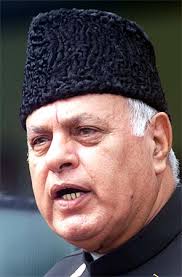On 8th April 2013, Minister of Renewable and New energy, Dr. Farooq Abdullah inaugurated the National Workshop on ‘Grid Integration of Renewable Energy Resources and Energy Efficiency. On this inauguration, according to the press release Dr. Farooq Abdullah said that today’s workshop is a forerunner to the fourth clean energy Ministerial summit in that it will discuss the important areas of clean energy development which are grid integration of renewable energy and energy efficiency. Increasing renewable energy supply requires a favourable policy environment which can encourage private investment. In fact, in India much of the renewable energy development-especially that which is grid-connected has taken place with private sector investment. There are issues such as effective integration of renewable energy in the grid, use of smart grids, and a market design that fosters the further addition of renewable energy in the grid.
Explaining the efforts of the last decade, Dr. Farooq Abdullah said that in the last decade the renewable energy technologies have leapfrogged at the global level. A series of policy initiatives and technology improvements have helped create a substantial supply base of renewable energy. Renewable power excluding large hydro power (which is hydro power projects more that 25MW) represents around 13 percent of the total installed capacity of electricity generation on India. Wind power is the fastest growing renewable source and it constitutes around 70 percent of the total renewable energy installed capacity in India. Our 12th five year plan proposals for the period 2012-2017 seek a capacity addition of 30 GW. A federal outlay of around US$4 billion has been earmarked for undertaking renewable energy activities during the next 5 years.
Flagging the grid balancing issues, he said that at present most of the renewable electricity generated within a state has to be absorbed within that state and grid balancing issues limit addition of more renewable electricity beyond a certain limit. Therefore evacuation from resource rich states to other parts of the country where load centres are located is essential for further growth of renewable power. In the state of Tamil Nadu where wind penetration is around 50 percent in terms of capacity is experiencing such constraint. The sudden addition or withdrawal of wind power from the grid is already causing difficulties in grid operation. During periods of sudden wind power ingress, it becomes uneconomical for the state to accept wind electricity. Further, if wind generation suddenly decreases, the utility either has to shed load or the state has to overdraw. Such a situation demands development of a mechanism for forecasting and scheduling and also for sharing renewable energy grid integration costs.
Dr. Abdullah said that the emergence of large amounts of renewable electricity around the country is creating new challenges for both the transmission and distribution sectors. Augmentation of transmission capacity enables better management of renewable energy variability. From a short term perspectives, better forecasting of renewable energy help utilities in efficient scheduling and dispatching of renewable energy generation, thereby contributing to grid stability. In a report titled “Green Energy Corridors” Power Grid corporation of India has estimated that around Rs. 43,000 crores or around US$ 8 billion would be required to strengthen and develop renewable power evacuation and transmission infrastructure for the planned renewable power capacity addition in next five years. We are looking at various options to raise financing for implementing this important report, including through public-private partnership.
The Minister hoped saying “We look forward to learning from international experiences and targeting international collaboration in the areas of renewable energy grid integration and energy efficiency. I am sure our engagement with the 21th century power partnership will not only focus on sharing policy and regulatory experience, but also will help in building a foundation for technological collaboration at the stakeholder level. Our present efforts are directed toward getting the best possible international experience and sdopt more efficient, resilient, and safe distribution of renewable power. The forthcoming clean energy ministerial provides an opportunity for targeted collaboration with the major development and also learning from each other’s experience. We also expect enhanced collaboration between participating Governments in technologies, developing strategies to drive public-private engagement in deployment.”
Speaking at the National Workshop which is organized in collaboration with United State Department of Energy under the United States 21st Century Power Partnership initiative, Secretary, MNRE, Sh. Rattan Wattal said that India and the United States of America and India have a long trail of partnership in renewable energy area. The clean energy Ministerial’s 21st century partnership leverages this relationship to activate a more global cooperation. He hoped this partnership will lead to creating new opportunities for businesses, industry and technological cooperation.
He said that rapid technological improvements and economies-of-scale suggest that reneable energy costs will continue to decline and become increasingly attractive options. Recent C-WET estimates indicate that a potential of over 100 GW electric power exists from wind energy alone. There are other higher side estimates too. Solar photovoltaic and solar thermal energy has the potential to generate around 50 MW per square km. Small hydro and Biomass could add another 40 GW capacity. Renewable power has already started contributing substantially in our electricity mix. I am sure our plans for next five years would be transformational in mainstreaming renewable power.
He further said that Grid planning in the high-renewable energy penetration scenario is of strategic importance and development of smart grids for enabling more efficient, resilient, and safe distribution of power is another area of action.
Highlighting the activities under 21 CPP, Sh. Alok Srivastava, Joint Secretary, MNRE, said there are power main areas like:-
1. Developing & sharing knowledge on topic relating to expansion of electricity sector.
2. Strengthening and disseminating these tools to accelerate this transformation.
3. Improving the capacity of experts and building expertise.
4. Finally leveraging all three-knowledge tools and expertise to improve our policies.
